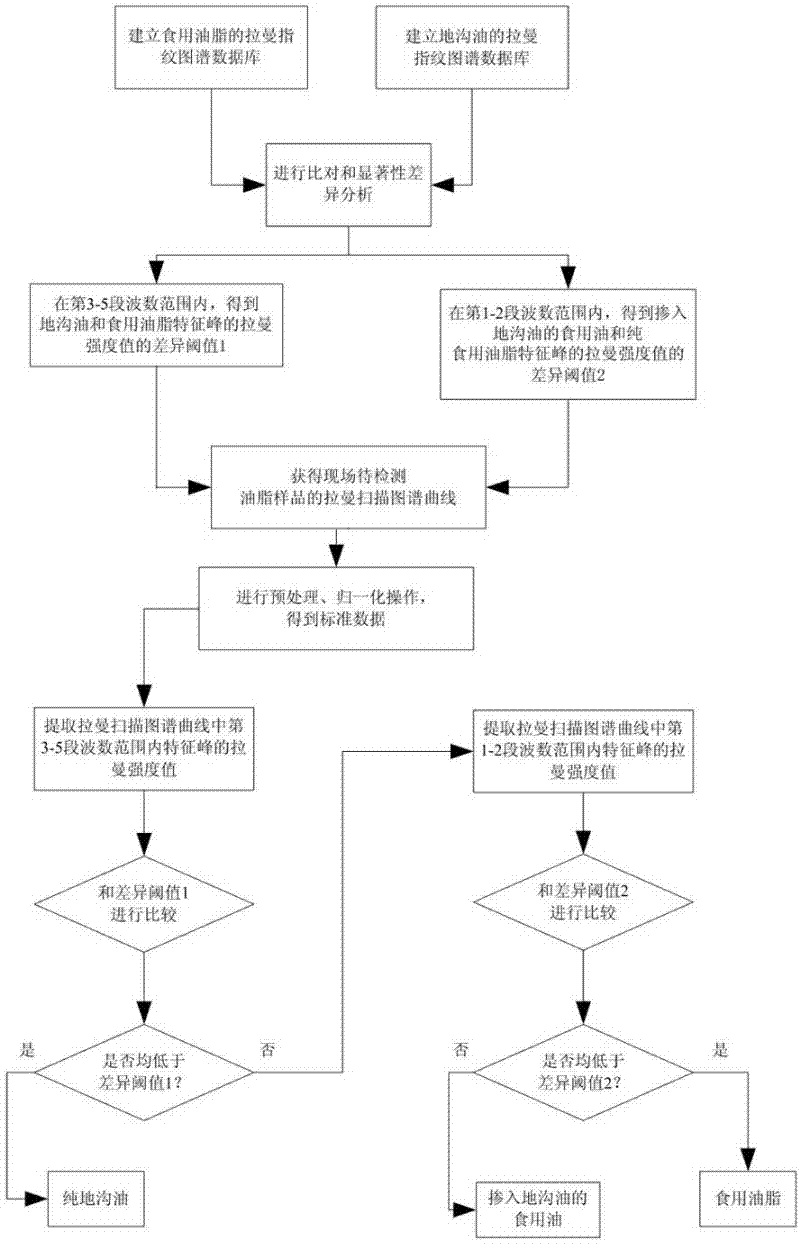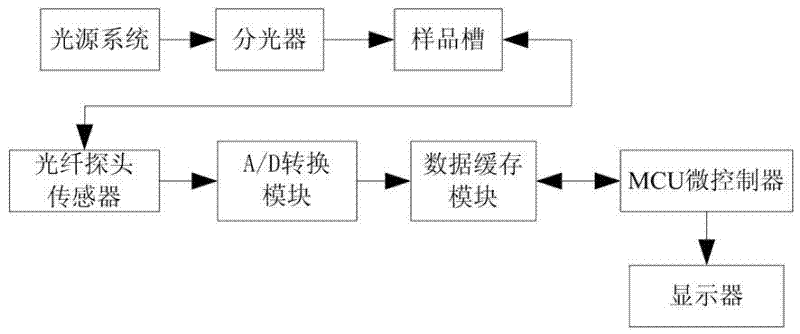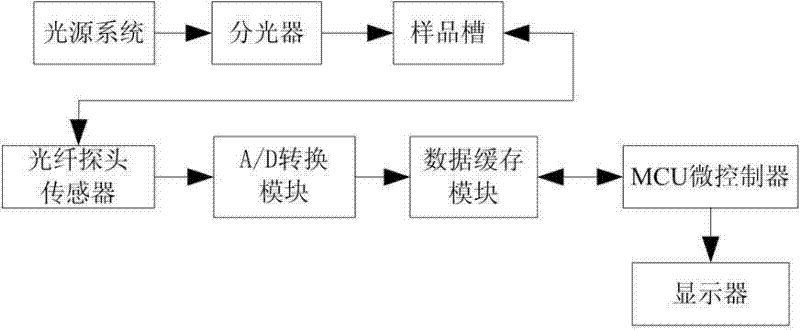Classification test method and classification test system for edible oil and swill-cooked dirty oil
A technology for classification and detection of edible oils and fats, applied in the direction of material excitation analysis, Raman scattering, etc., can solve the problems of inability to obtain high-resolution bands and low signal-to-noise ratio, and achieve short identification time, strong specificity, The effect of easy operation
- Summary
- Abstract
- Description
- Claims
- Application Information
AI Technical Summary
Problems solved by technology
Method used
Image
Examples
Embodiment Construction
[0029] Below in conjunction with accompanying drawing, technical scheme of the present invention is described in further detail:
[0030] combine figure 1 As shown, the overall process of the detection method of the present invention is as follows:
[0031] The first step is to screen the common Raman characteristic peaks of various edible oils from the Raman scanning spectrum curve of edible oils, and use the wave number and Raman intensity value of the characteristic peaks as parameters to establish the Raman fingerprint of edible oils database.
[0032] Edible oils and fats have both common Raman characteristic bands and individual characteristic bands; Table 1 shows the common characteristic Raman bands, and all edible oils and fats will be separated at 1260cm -1 -1275cm -1 、1299cm -1 -1305cm -1 、1435cm -1 -1450cm -1 、1654 cm -1 -1659cm -1 、2853cm -1 -2856cm -1 、2884cm -1 -2905cm -1 、3006cm -1 -3015cm -1 There are obvious Raman peaks in the range.
[0033] ...
PUM
| Property | Measurement | Unit |
|---|---|---|
| Raman intensity | aaaaa | aaaaa |
Abstract
Description
Claims
Application Information
 Login to View More
Login to View More - R&D
- Intellectual Property
- Life Sciences
- Materials
- Tech Scout
- Unparalleled Data Quality
- Higher Quality Content
- 60% Fewer Hallucinations
Browse by: Latest US Patents, China's latest patents, Technical Efficacy Thesaurus, Application Domain, Technology Topic, Popular Technical Reports.
© 2025 PatSnap. All rights reserved.Legal|Privacy policy|Modern Slavery Act Transparency Statement|Sitemap|About US| Contact US: help@patsnap.com



